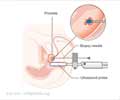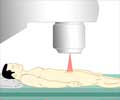A new platform that combines two established imaging methods can peer into both the structure and molecular makeup of the prostate in men with prostate cancer.
A new dual imaging approach was found to improve the diagnosis and monitoring of prostate cancer, said new study. The technology is more sensitive and comprehensive compared to current "gold standard" methods, indicating it could allow clinicians to //diagnose and monitor prostate cancers in real time with greater accuracy and confidence.
Prostate cancer affects over 1.2 million people worldwide and is one of the most common malignancies in men. Most cases are diagnosed using biopsy and a method called transrectal ultrasound (TRUS), which uses sound waves to image the prostate and its surrounding tissues. However, TRUS cannot probe the prostate's molecular profile, meaning it misses key molecular markers and often gives false negatives and positives.
TOP INSIGHT
A new platform that combines two established imaging methods can peer into both the structure and molecular makeup of the prostate in men with prostate cancer.
To overcome these limitations, Sri-Rajasekhar Kothapalli and colleagues created TRUSPA, a device that integrates TRUS with a hybrid optical-ultrasound method named photoacoustic imaging. Combining these approaches allows TRUSPA to detect anatomical features of the prostate such as blood vessels in real time, as well as detailed molecular information within tumors.
The platform worked as intended in mouse models of prostate cancer and in isolated human prostates and administering an FDA-approved dye enhanced image contrast. In an experiment with 20 male subjects, TRUSPA provided clear images of the prostate's anatomy - peering as deep as six centimeters into tissue - and could distinguish a malignant region of the prostate in one patient with advanced disease.
Kothapalli et al. will investigate how TRUSPA could be developed to detect specific biomarkers of prostate cancer, which could further boost its accuracy and clinical potential.
Source-Eurekalert

 MEDINDIA
MEDINDIA




 Email
Email



![Prostate Specific Antigen [PSA] Prostate Specific Antigen [PSA]](https://www.medindia.net/images/common/patientinfo/120_100/prostate-specific-antigen.jpg)






